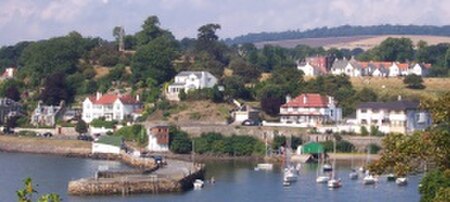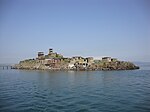Aberdour

Aberdour ( ; Scots: , Scottish Gaelic: Obar Dobhair) is a scenic and historic village on the south coast of Fife, Scotland. It is on the north shore of the Firth of Forth, looking south to the island of Inchcolm and its Abbey, and to Leith and Edinburgh beyond. According to the 2011 census, the village has a population of 1,633.The village's winding High Street lies a little inland from the coast. Narrow lanes run off it, providing access to the more hidden parts of the village and the shoreline itself. The village nestles between the bigger coastal towns of Burntisland to the east and Dalgety Bay to the west. The parish of Aberdour takes its name from this village, and had a population of 1,972 at the 2011 Census.
Excerpt from the Wikipedia article Aberdour (License: CC BY-SA 3.0, Authors, Images).Aberdour
Park Lane,
Geographical coordinates (GPS) Address Nearby Places Show on map
Geographical coordinates (GPS)
| Latitude | Longitude |
|---|---|
| N 56.052778 ° | E -3.302105 ° |
Address
Park Lane 10
KY3 0TR
Scotland, United Kingdom
Open on Google Maps









